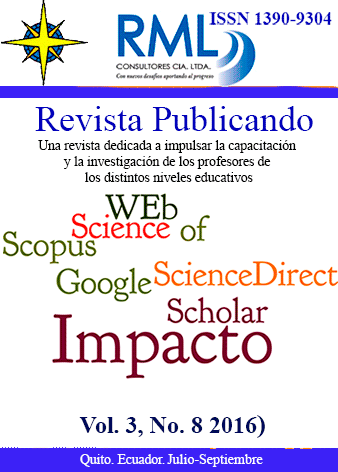Abstract
Actualmente, las matemáticas aportan herramientas y modelos matemáticos de ecuaciones diferenciales como apoyo a estudios específicos de investigación, que tienen los alumnos al acceder al primer curso de Matemáticas en la Universidad. En relación con ello se analiza la normativa de las pruebas de acceso, el tratamiento que se da a los sistemas en algunos libros de texto, y las consecuencias que pueden derivarse del uso de esos esquemas. Se plantea una investigación “de desarrollo” como novedad metodológica llevándose a cabo mediante un estudio de casos cruzado profesores, asignaturas y estrategias. Se describen las bases, procedimiento y valoraciones del alumnado tras su aplicación.
References
Anton, H. (1991) “Introducción al álgebra lineal”, Limusa, 5 ª edición. Colera, J.;
Oliveira, M.J. (2009) “Matemáticas II. 2 º bachillerato”,
Anaya. Escoredo, A. y otros (2009) “Matemáticas II. 2 º bachillerato”,
Santillana. Grossman, S. (1992) “ílgebra lineal con aplicaciones”, McGraw-Hill, 3 ª edición.
Tall, D.; Vinner, S. (1981) “Concept image and concept definition in mathematics with particular reference to limits and continuity”, Educational Studies in Mathematics Education, n º 12, pp. 151- 169.
ALONSO, C., GALLEGO, D. y HONEY, P.: (1994), Los estilos de aprendizaje.
Procedimientos de diagnóstico y mejora. Mensajero, Bilbao.
AMES, R. y AMES, C.:(1984), Introduction. En R. Ames y C. Ames, Research on
Motivation in Education: Vol1. Student Motivation, pp. 1-11. New York:
Academic Press.
COMPAP (Consortium for Mathematics and Its Aplications): 1998,. The Right Stuff.
En Mathematics: Our World: Course 2. pp. 254-319. Cincinnati, Ohio:
South-Western Educational Publishing.
DeCHARMS, R.: (1984), Motivación enhancement in Education setting. En R. Ames y
C. Ames, R. Research on Motivation in Education: Vol1. Student Motivation, pp. 275-310. New York: Academic Press.
GOMEZ-CHACON, I. M.: (2000), Matemática emocional. Los afectos en el aprendizaje matemático. Narcea, Madrid.
GUZMíN, M. de: (1994), Para pensar mejor. Desarrollo de la creatividad a través de los procesos matemáticos. Pirámide, Madrid.
GUZMíN, M. de: (1995), Aventuras matemáticas. Una ventana hacia el caos y otros episodios. Pirámide, Madrid.
HOLT, J.: (1982), How Children Fail. Rev. Ed. New York: Delacorte Press/Seymour Lawrence.
MASON, J.; BURTON, L.; STACEY, K.: (1988), Pensar matemáticamente. MEC-Labor.
OCDE-PISA: (2005), Informe Pisa 2003. Aprender para el mundo de mañana. OCDEPISA, Santillana.
SKEMP, R. (1980), Psicología del aprendizaje de las matemáticas. Madrid. Ed. Morata.
VOLET, S.: (2001), Understanding learning and motivation in context: A multidimensional and multilevel cognitive-situative perspective. In S. Volet, &
S. Jí¤rvelí¤ (Eds.), Motivation in learning contexts: Theoretical and methodological implications. A volume in the EARLI/Pergamon "Advances in Learning and Instruction" series. pp. 57-82.
WEINER, B: (1986), an atributtional theory of motivation and emotion. Nueva York: Springer-Verlag.
Inés M. Gómez Chacón, Facultad de CC. Matemáticas, Universidad Complutense de Madrid
You are free to:
Share — copy and redistribute the material in any medium or format.
Adapt — remix, transform, and build upon the material.
The licensor cannot revoke these freedoms as long as you follow the license terms.
Under the following terms:
Attribution — You must give appropriate credit, provide a link to the license, and indicate if changes were made. You may do so in any reasonable manner, but not in any way that suggests the licensor endorses you or your use.
NonCommercial — You may not use the material for commercial purposes.
ShareAlike — If you remix, transform, or build upon the material, you must distribute your contributions under the same license as the original.
No additional restrictions — You may not apply legal terms or technological measures that legally restrict others from doing anything the license permits.
